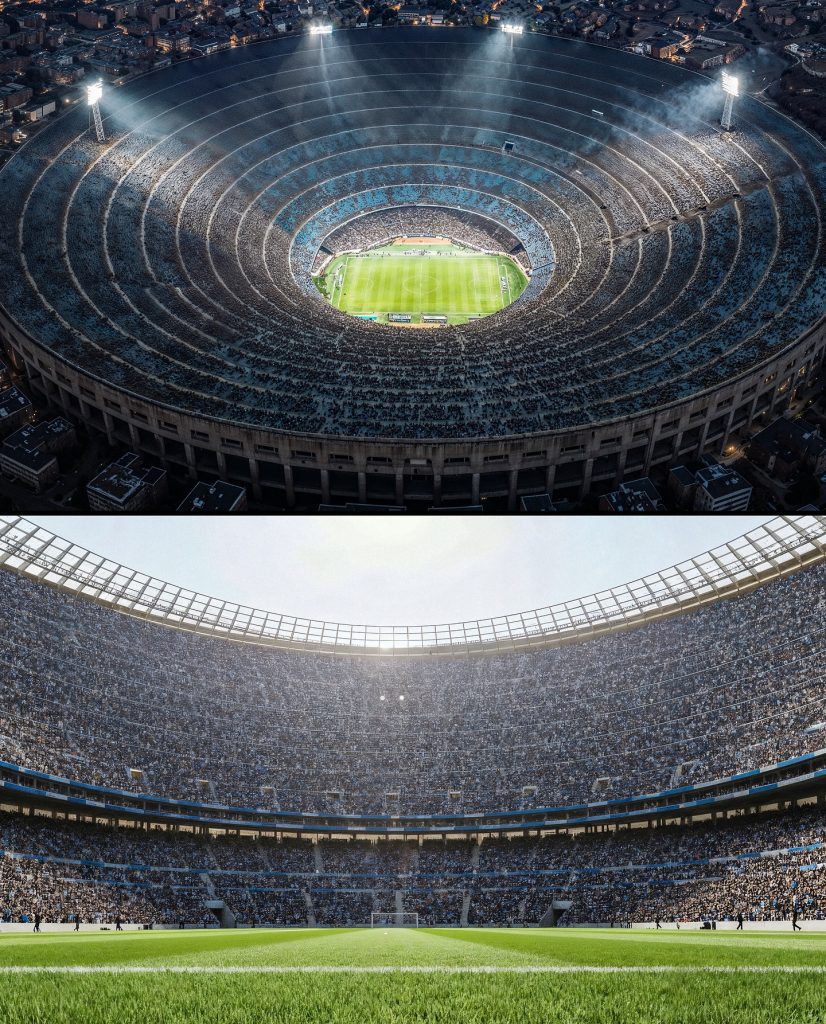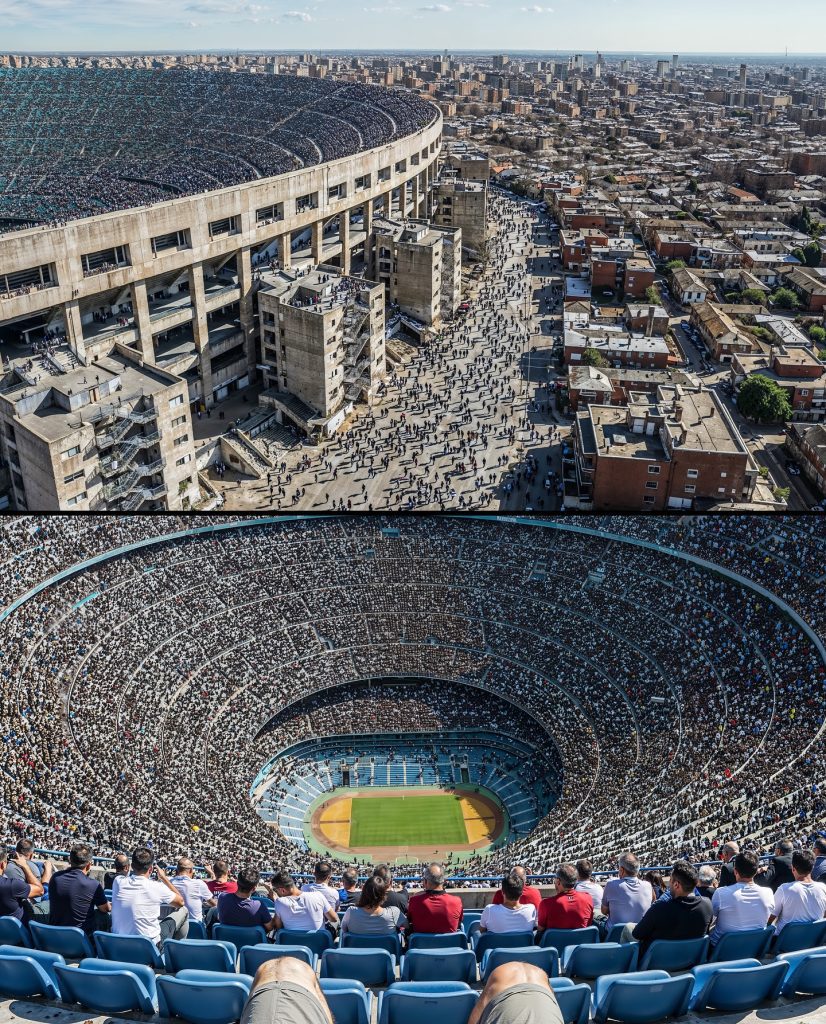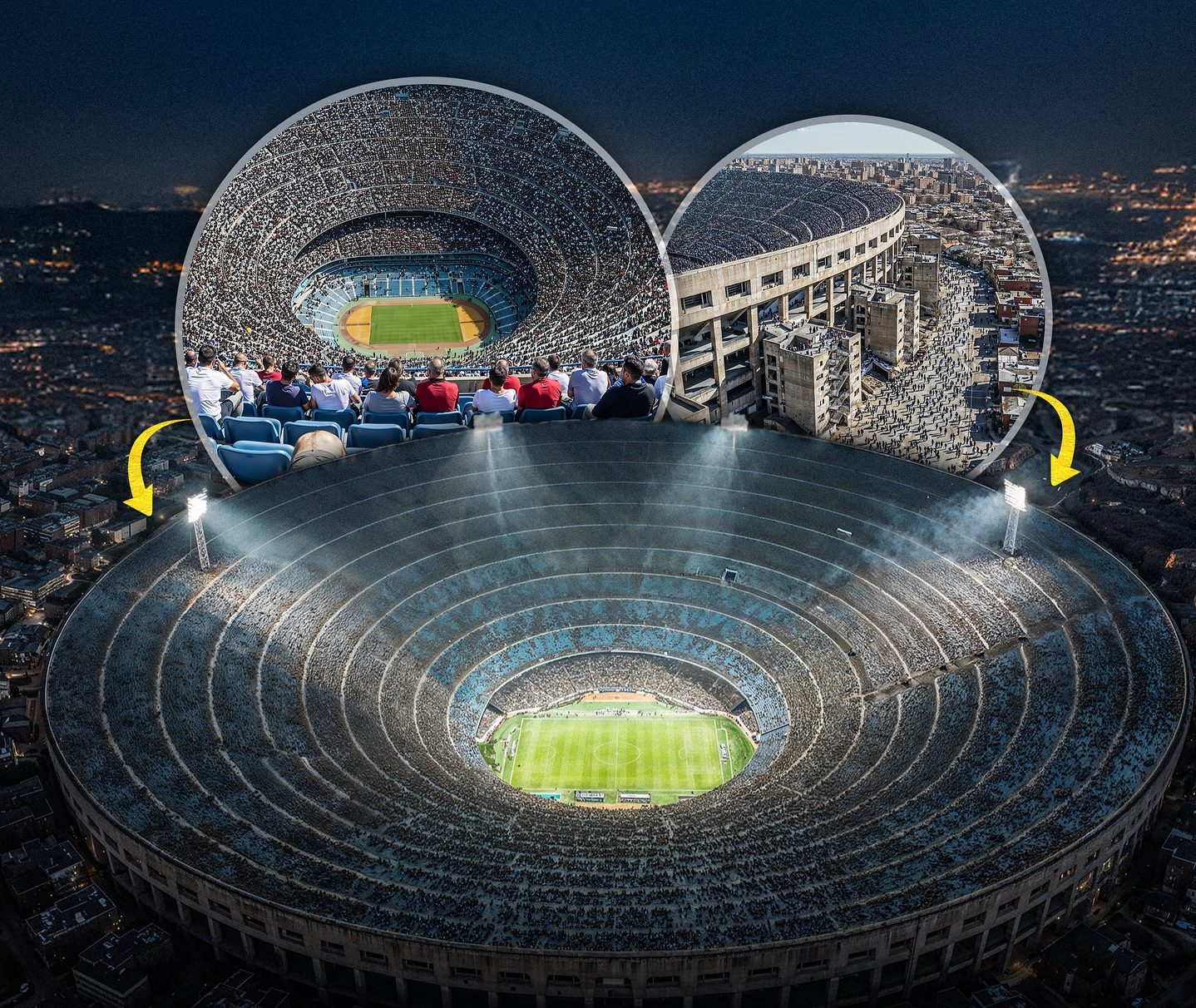A Stadium So Big It Feels Like a City — Here’s What a 1-Million-Seat Arena Would Really Look Like
Imagine standing in a stadium so large that you can barely see the other side. The sound of the crowd doesn’t just echo — it rolls like thunder through an endless sea of humanity. That’s the surreal vision behind the concept of a 1-million-seat stadium, a design so massive that it stops being a sports venue and starts feeling like an entire city built around one field.

At one million seats, this structure would dwarf every stadium currently on Earth. The largest real stadium today, the Rungrado 1st of May Stadium in Pyongyang, North Korea, holds around 114,000 people — which means the imagined mega-arena would be nearly eight times larger. It’s a number so outrageous that even modern city planners would struggle to make it work. For comparison, if you filled that stadium, you’d have the population of San Jose, California, or almost the entire city of Birmingham, England, gathered in one place.
The challenges start the moment you think about getting a million people in and out safely. Even the most advanced transportation networks in the world would buckle under that kind of pressure. Engineers estimate that to clear the crowd in about an hour, you’d need around 15 high-capacity metro lines all operating simultaneously at full speed — something that doesn’t exist anywhere in the world. Stadium design experts point out that infrastructure for such a venue wouldn’t just involve parking lots and turnstiles; it would require highways, train systems, and utilities that rival a small metropolis.

Then there’s the issue of basic amenities. Building codes require a certain number of restrooms per person, meaning the stadium would need roughly 12,500 toilets. That’s enough to fill a dozen shopping malls. Food, water, power, and waste management would all need to be scaled up to a level no single venue has ever attempted. Engineers describe it as crossing the line from “architecture” into “urban planning.” You’re not just designing a stadium anymore — you’re designing a living, breathing city that just happens to revolve around a game.
Even acoustics would be a nightmare. In a typical 80,000-seat stadium, a chant or cheer travels across the stands in seconds. But in a million-seat arena, sound would take several seconds to ripple through the air, creating a strange time-lag effect where different parts of the crowd might react at completely different times. On television, it might look synchronized, but inside, the roar would feel like a slow-moving wave instead of an instant eruption.

Lighting, too, becomes a monumental problem. You’d need hundreds of massive floodlights to evenly illuminate a stadium this size, drawing enough power to run a small town. Emergency exits would have to be spread across miles of corridors, and medical services would need full hospitals on site, not just first-aid rooms. Security logistics would resemble that of a major international event — or an entire Olympic Games — happening every weekend.
Still, it’s hard not to be amazed by the sheer imagination behind the concept. The thought of one million fans watching a single match together stirs something deep in us — the same energy that drives humans to build skyscrapers, megacities, and rockets to space. It’s proof of how far we push limits when we dream big.
If it ever existed, a 1-million-seat stadium wouldn’t just host sports. It would be a monument to human ambition — a modern colosseum where design, engineering, and passion collide on an almost mythical scale. Maybe it’s impossible, maybe it’s impractical, but it’s also beautiful to imagine. Because sometimes, the most inspiring ideas are the ones that remind us that our greatest architecture doesn’t just live in steel and concrete — it lives in our collective imagination.

